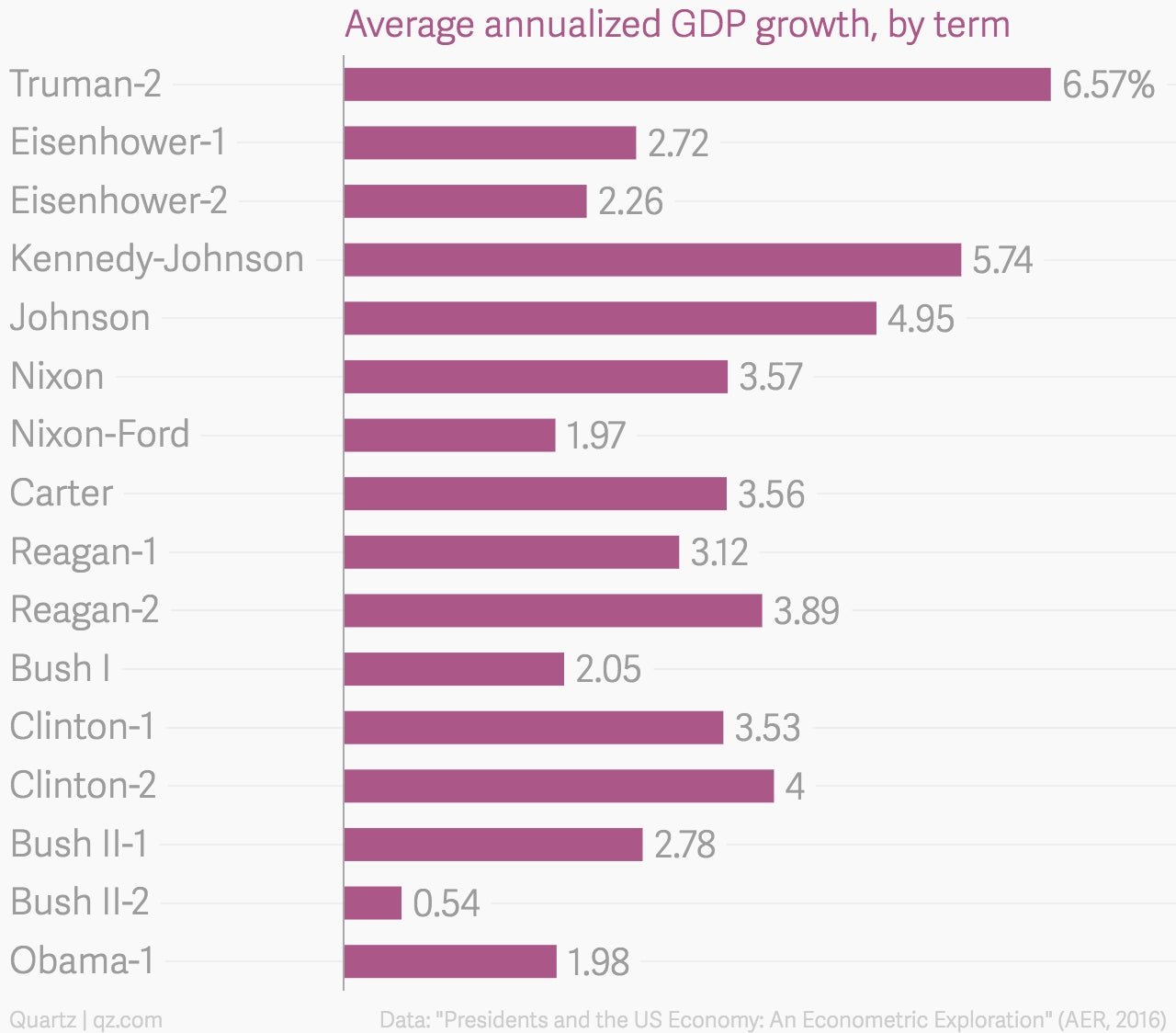The US economy does a lot better when Democrats are in the White House
Democrats are the party of US economic growth.


Democrats are the party of US economic growth.
In the years since World War II, US economic growth rates were 1.8 percentage points higher under Democratic presidential administrations, according to a paper by Princeton economists Alan Blinder and Mark Watson, published in the April edition of the American Economic Review. (Their working paper on the topic was published by the National Bureau of Economic Research working paper back in 2014.)

The typical pushback on this type of analysis is that we’re only talking about 16 different presidential terms, a pretty small sample size. But Blinder and Watson say that their findings are indeed statistically significant, meaning there is definitely a clear relationship between economic growth and the presence of a Democrat in the White House.
“The average growth rates under Democratic and Republican presidents were starkly different: 4.33 percent and 2.54 percent, respectively. This 1.79 percentage point gap (henceforth, the D-R gap) is astoundingly large relative to the sample mean.4 It implies that over a typical four-year presidency the US economy grew by 18.5 percent when the president was a Democrat, but only by 10.6 percent when he was a Republican.”
But the exact nature of this relationship is hard to tease out.
The paper finds that tough-to-predict occurrences such as bursts of economic innovation—like as the one seen in the 1990s under Bill Clinton—and violent oil price surges—such as the spike during George W. Bush’s second term that helped set the stage for the Great Recession—explain some of the difference between growth rates under the two different parties.
Other factors involve things like defense spending, consumer sentiment, and economic growth outside the US. “Some, maybe all, of these might be considered blends of good policy and good luck,” the authors conclude. “But our empirical analysis does not attribute any of the partisan growth gap to fiscal or monetary policy.”
In other words, whatever is helping the economy grow more vigorously under Democrats doesn’t have much to do with US economic policy at all.